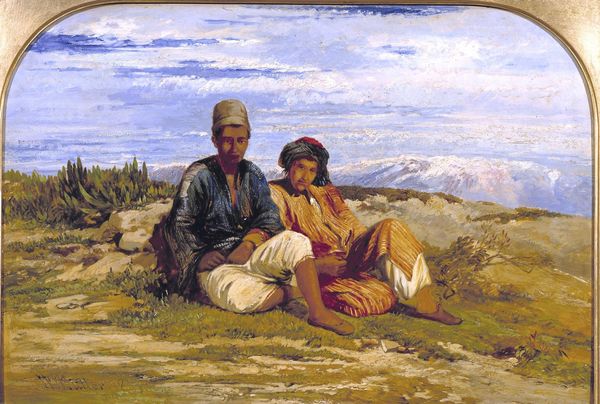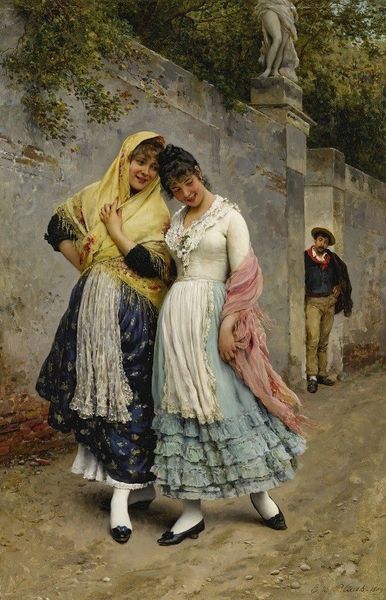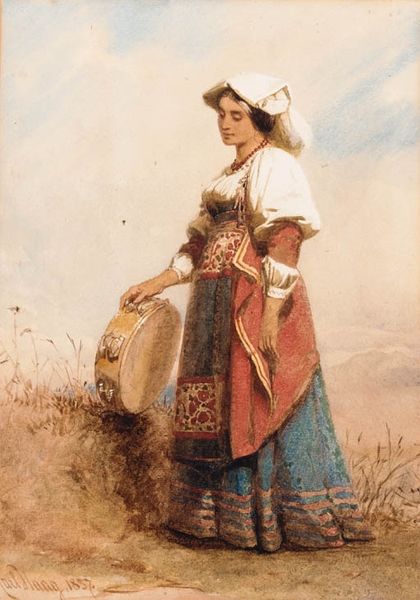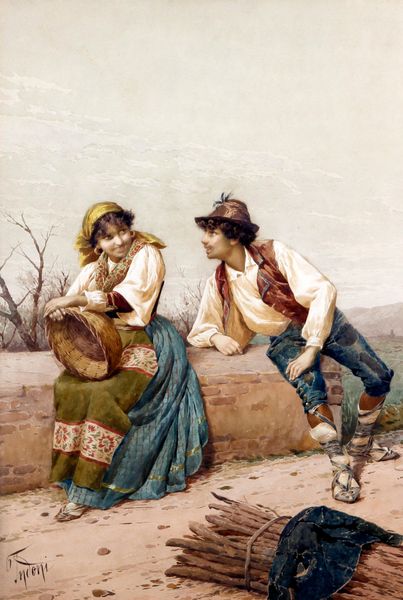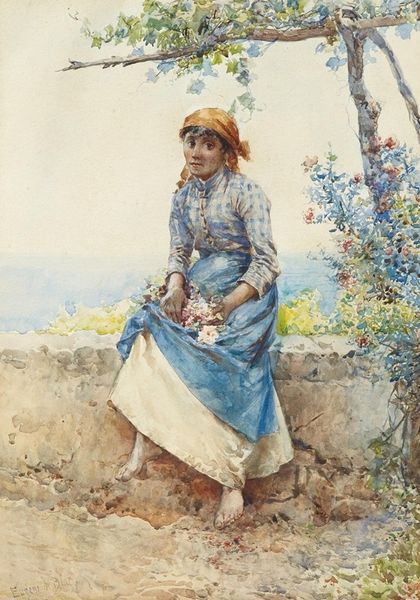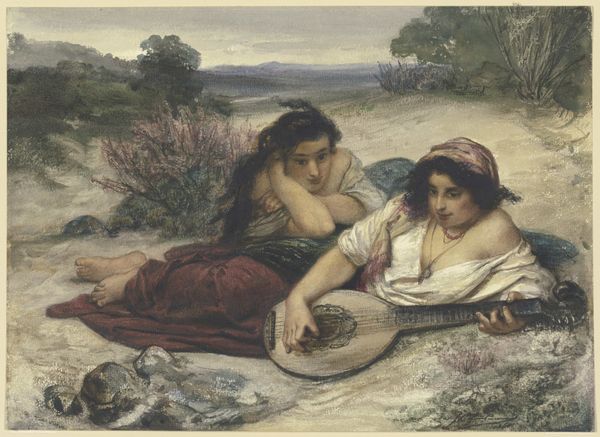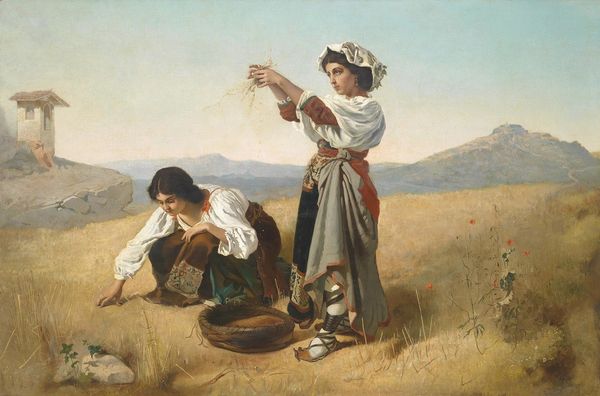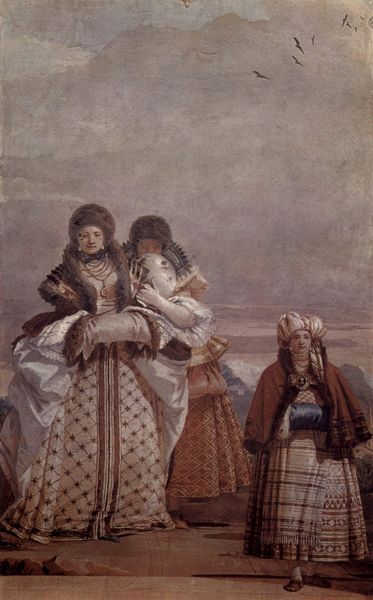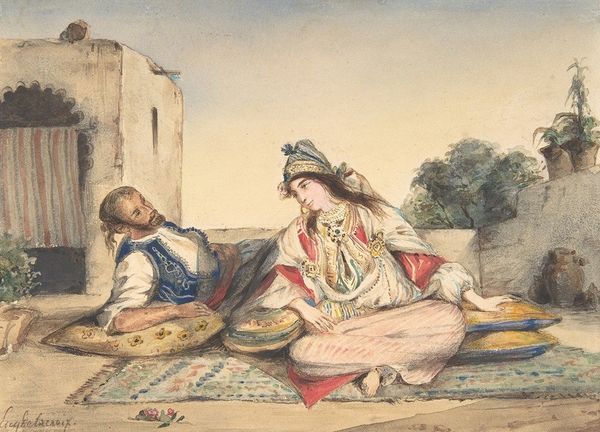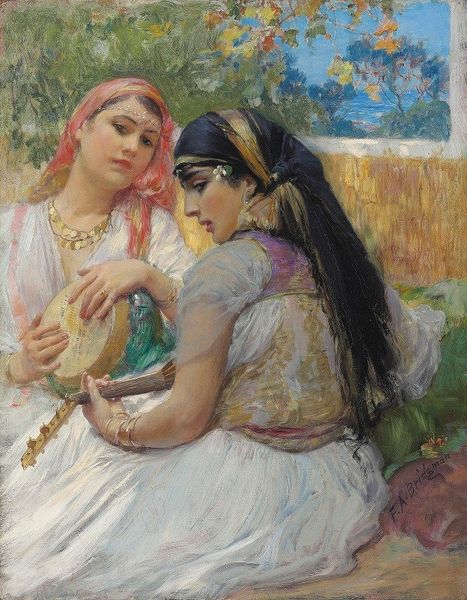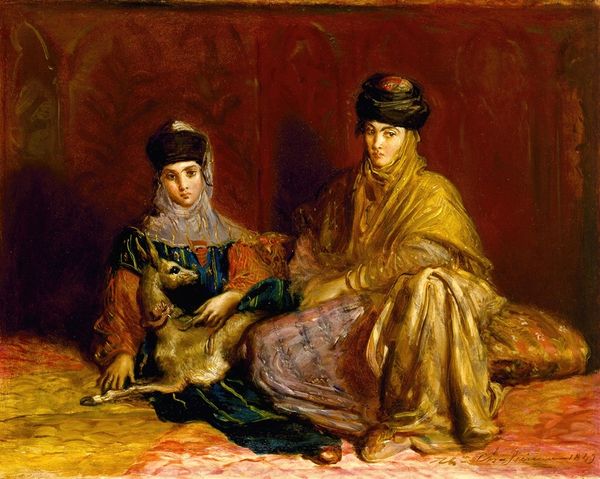
watercolor
#
portrait
#
figuration
#
oil painting
#
watercolor
#
romanticism
#
genre-painting
#
academic-art
#
portrait art
#
watercolor
Copyright: Public domain
Editor: Here we have Thomas Sully’s "Gypsy Maidens," painted in 1838, using watercolor. It's such a serene scene, but those gazes feel a little intense. What do you see in this piece? Curator: Well, immediately, I'm drawn to the headscarves. The vibrant patterns worn in a specific way--can speak volumes about status, community ties, and even resistance to assimilation, like an encrypted language on display. What do you suppose the painter is attempting to communicate by featuring the scarves so prominently? Editor: Perhaps Sully was romanticizing the women and using those textiles to exoticize them, reflecting society’s fascination with nomadic people? Curator: It's possible. Also note the delicate watercolor technique versus a looser painting style. Think of it almost as Sully imbuing their likenesses with grace, but on whose terms? The symbol of 'the gypsy' at the time wasn't known for its accuracy! The history gets complicated when filtered through the lens of societal bias. What is left for us to believe? Editor: So, the artwork itself acts as a symbol that morphs over time? Curator: Precisely. And isn't that a testament to the power of visual imagery? Each stroke can contribute to, or challenge, the narrative, adding layers to cultural memory and our perception of it. Even now. Editor: That gives me a new perspective! I guess images really can hold so much more than what we initially see.
Comments
No comments
Be the first to comment and join the conversation on the ultimate creative platform.
